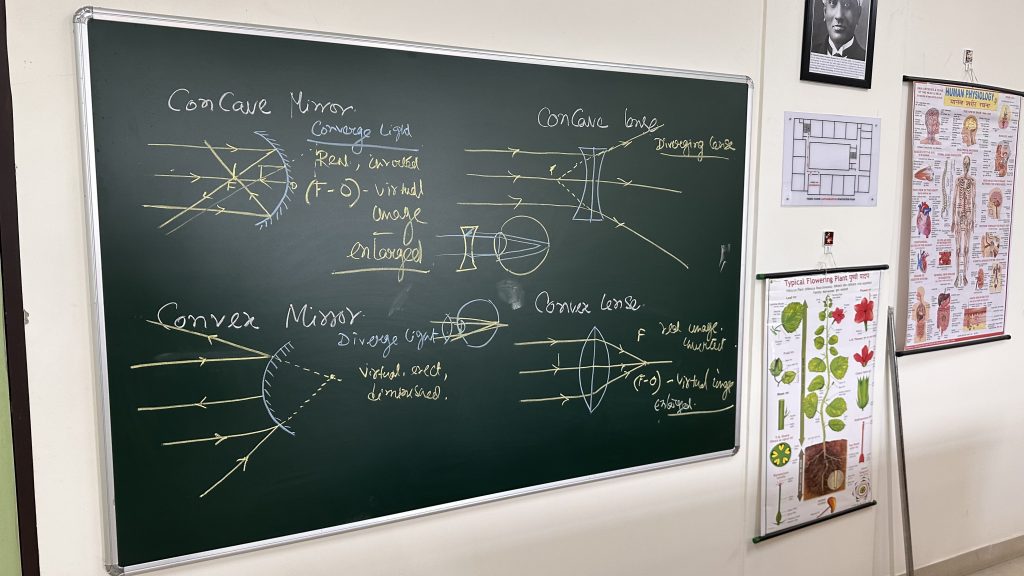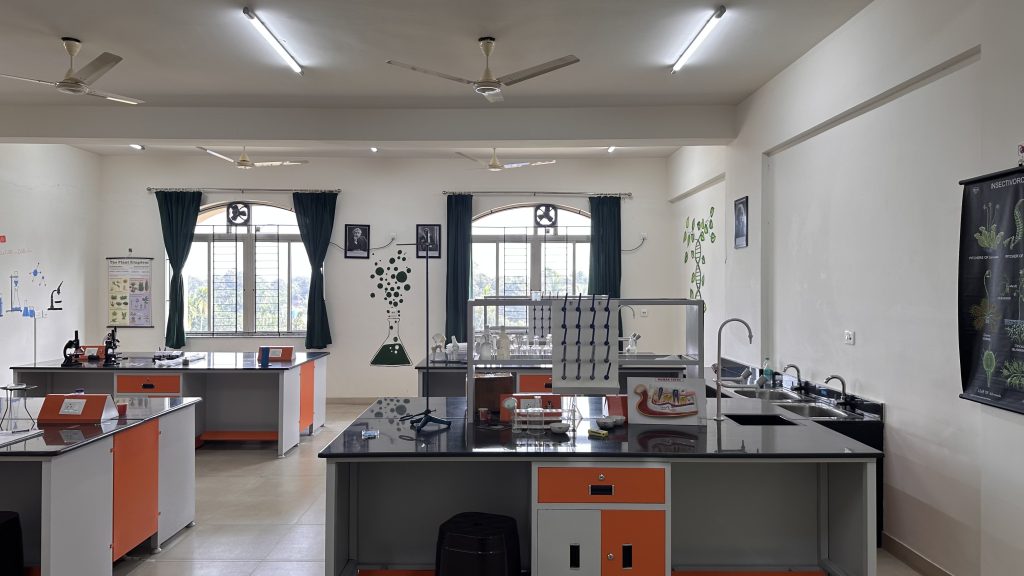
The playful and inquisitive minds of students can do wonders if encouraged and guided to discover novel ideas. Fostering deep love for science among children in the ever-changing education scenario is crucial. When students go through practical examples with theory, they not only learn better but also have an added interest in the process. So, when teaching complex subjects like chemistry and biology having science laboratory in schools become mandatory.
When students learn new concepts in their science class, practical application of theoretical knowledge helps them clear concepts. It is the laboratory where they explore scientific problems under the guidance of their educators.
Science laboratory in schools is a space where all the technological research and scientific experiments occur. These experiments happen under controlled conditions and cannot be performed in regular classrooms. Children should also be monitored during such experiments so they are asked to not do such practices alone. To feed their curiosity and make science fun, labs create a safe space to run experiments.
A scientific lab in a school creates opportunities for students to practically experience what they learn theoretically. Let us explore all the benefits of having a science lab in school:
Passive learning may be sufficient in other subjects but when it is about science, we have to elaborate practically. If students are limited to lectures in their science class, how will they ever become scientists and engineers?
In a lab, students aren't just passive recipients but the one who actively participate in the learning process. Due to this involvement, their doubts are clarified, and they have ample opportunities for experimental learning.
Experimental learning is essential as it enables students to discover, experiment, and observe. This hands-on approach helps them remember concepts taught in school. Students are more likely to remember what they apply practically than rely on rote learning.

Inquiry-based learning is one of the things that differentiates lab-based learning from classroom learning. In a lab, students can ask questions, design experiments, analyze data, and formulate hypotheses. They don't just unquestioningly believe what's written in the textbook. Instead, they experiment, collect their data, and then interpret results based on the collected evidence. This process reinforces a child’s understanding of scientific methodologies by applying theoretical knowledge in real-life situations.
Have you ever been to a biology laboratory in school? You will see students engaged in enjoyable activities like dissecting a frog to understand its anatomy. As they do so, they make observations, ask questions, and draw conclusions.
Imagine experimenting to check the effectiveness of multiple fertilizers on the growth of plants. You’ll follow steps like forming a hypothesis, designing an experiment, collecting data, and concluding with findings.
This kind of scientific method will teach you how to solve problems in a strategic and structured manner. Your mind will automatically be programmed to think objectively and logically. Similarly, physics labs help students tackle practical issues like estimating uncertainties and measuring physical quantities. That’s the importance of the physics laboratory.
The laboratory teaching methods are such that they go beyond lectures and rote learning. In a lab, students don't just observe but also participate in scientific phenomena. The learning doesn’t end at reading chemical reactions but witnessing those reactions firsthand.
Sometimes, experiments might not go as planned. This requires learners to identify errors and repeat experiments until corrected. So, there’s no place better than labs for in-depth learning.
Thanks to hands-on experiences, students develop a thorough understanding of complex scientific concepts. Curious minds are triggered to think out of the box and find solutions. This makes learning fun and engaging. Real-world applications and open-ended explorations further stimulate their minds and enhance creativity.
When we encourage children to foster curiosity through science, we make way for future engineers and scientists to generate breakthroughs. It starts with interest that leads to learning, application, and there on, the sky is the limit!
Through various methods, students learn safety awareness in science labs. First, teachers demonstrate laboratory practices to show students how to stay safe. Then, the laboratory instructor gives formal training on how to use equipment and handle chemicals.
Students strictly abide by safety rules in the lab, designed to keep accidents at bay. Labs also have the necessary safety equipment, like lab coats, goggles, gloves, etc., to protect learners from hazards.
In a way, the safety awareness taught in labs stays with children for the rest of their lives. They utilize these learnings in workplace and as they go to higher educational levels.
Unlike the classroom, the lab instructor assumes the role of a guide, not a lecturer. The instructor's job is to provide resources while students have autonomy. As they formulate hypotheses and do experiments, they imitate the work of actual scientists. They also reflect on their work, try to improve, and refine their understanding independently. Therefore, in science labs, self-directed learning empowers learners to own their work and learning journey.

In labs, teachers often create groups and assign important roles like analyst, presenter, and data collector. This allows students to work together towards a shared goal, realizing every team member's strength.
Individual data collected by students is combined to get a comprehensive dataset. Such a project’s success depends on every individual's contribution, cultivating a sense of accountability and responsibility. Then, there are debates and discussions during which students can consider varied perspectives.
As they learn from each other's mistakes, they offer support and create a collaborative environment.
Laboratories are incubators of innovation. In a lab, students conduct hands-on experiments to test the theories learned in classrooms. A child who has fun in the physics lab dreams of pursuing a career in some STEM-related (science/ technology/ engineering/ mathematics) field.
The practical experience they gain in modern labs gives them the confidence to opt for advanced courses. So, these are the places where they aspire to become engineers, innovators, and scientists.
To facilitate the learning outcomes mentioned above, schools design their laboratories, considering many factors. To ensure students have safe and memorable laboratory experiences, the lab designs follow these best practices:
Science laboratory in schools are among the most exciting places where young learners learn experimental and scientific skills. It represents an enlightening space where science equipment and tools help them conduct meaningful research.
Working in a laboratory develops critical thinking, sharpens problem-solving skills, builds teamwork, and deepens comprehension. So, labs play a pioneering role in enhancing students' scientific skills and stimulating their love for science.